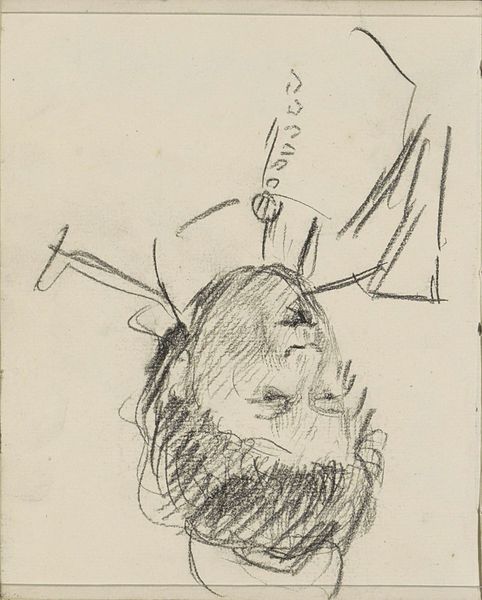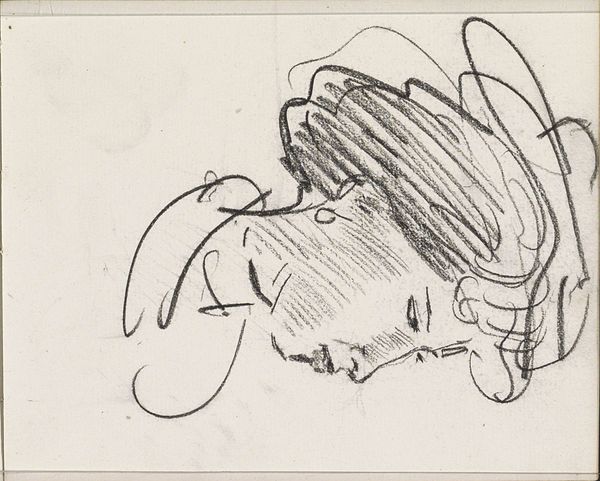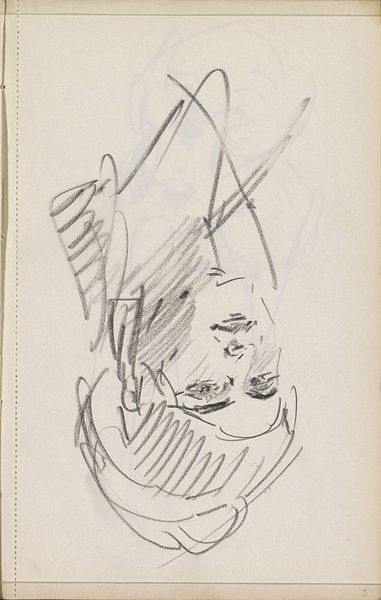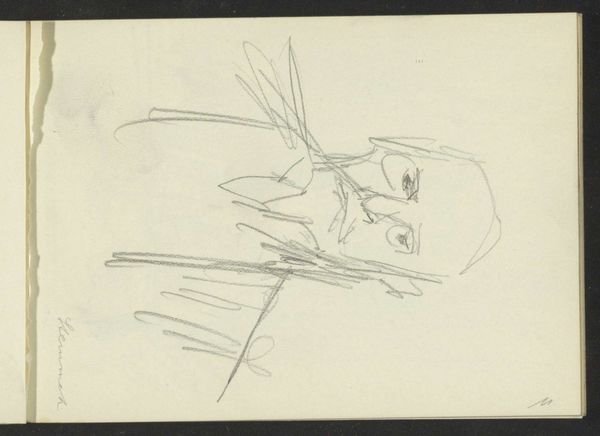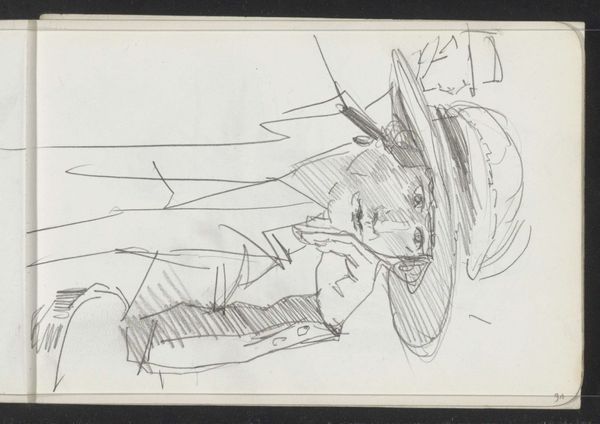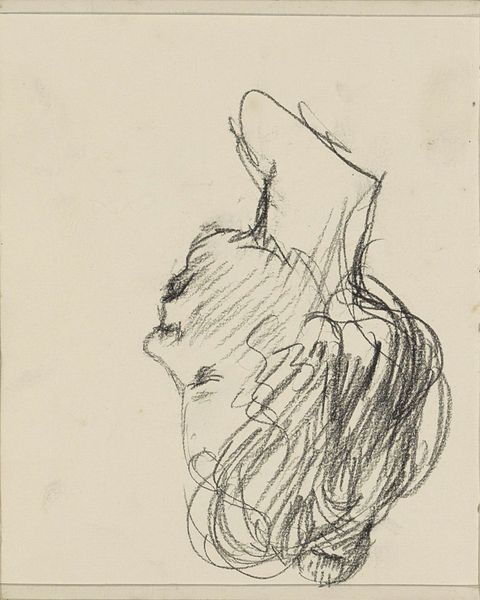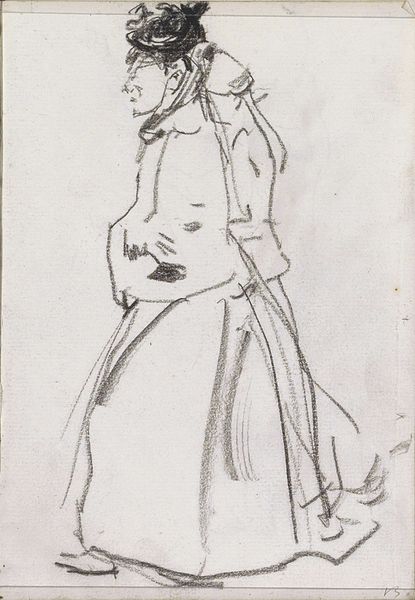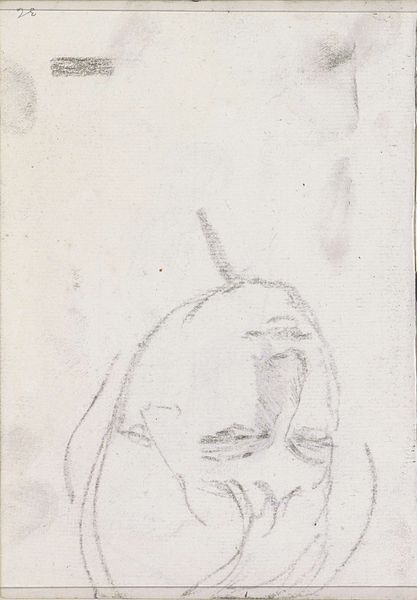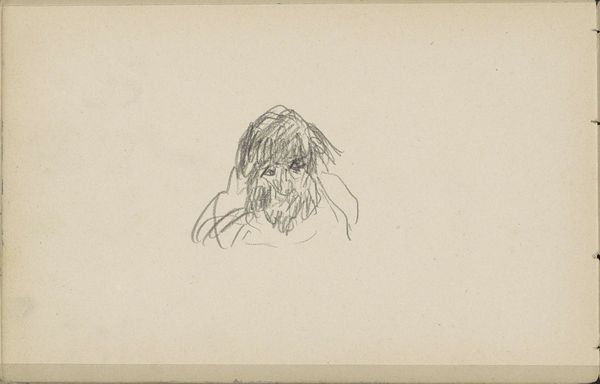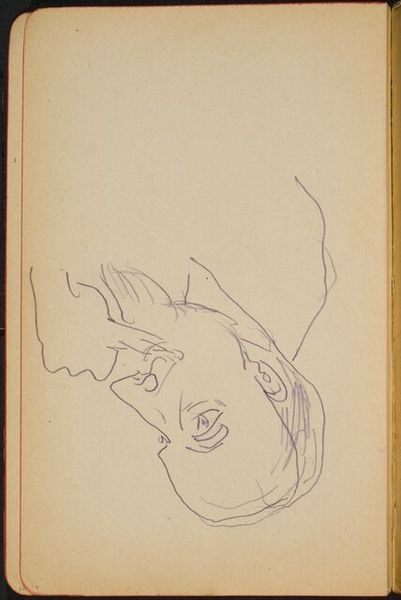
Copyright: Rijks Museum: Open Domain
Editor: Here we have Isaac Israels' "Vrouwenhoofd," a graphite drawing done sometime between 1886 and 1903. It’s currently housed in the Rijksmuseum. It looks like a quick sketch, almost a doodle. What do you make of it? Curator: It’s a fascinating glimpse into Israels’ working process. The hasty marks, the smudging of the graphite—they all point to a rapid execution. But what kind of labor is actually visible? Look closely, it seems almost as if a discarded item now becomes viewed for artistic merit. It almost allows the viewer a peek behind the artistic curtain, so to speak. Editor: So, the value comes from seeing the artist's process, rather than the finished product? Curator: Precisely! Think about the social context. Impressionism was challenging the established academic system. Artists were moving away from idealized representations and towards capturing fleeting moments. Even Israels choice of materials – a relatively inexpensive graphite rather than paints. Editor: It's like he’s elevating the everyday materials, in line with everyday subject matter. Curator: Exactly! Is he making commentary on class as well through doing this? To really understand "Vrouwenhoofd," you have to look beyond the simple image and delve into the materials, the method, and what Israels is doing with them. Editor: So, by valuing this "unfinished" sketch, we're also re-evaluating artistic skill and labor itself. Thanks! This has completely shifted my understanding. Curator: My pleasure! Looking at the art's physical existence lets you think of a different meaning and cultural history.
Comments
No comments
Be the first to comment and join the conversation on the ultimate creative platform.
